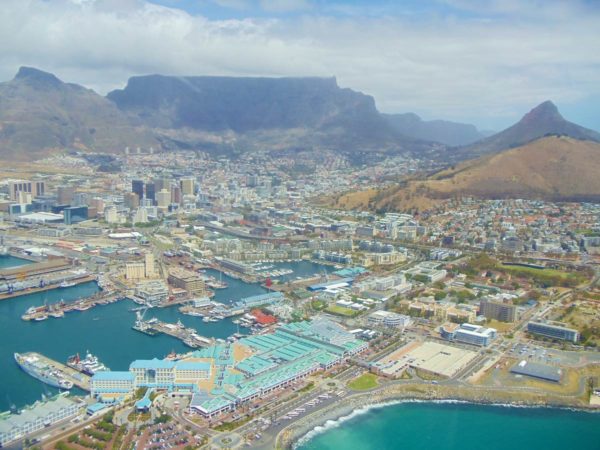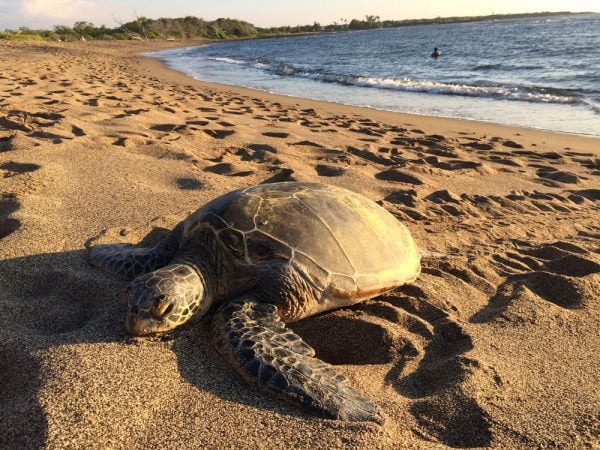2 Weeks in Reunion Island Itinerary
Day 7: Piton des Neiges Hike
The ascent to the summit of the Piton des Neiges is “the mother of all hikes” on Reunion Island. To celebrate the halfway point of our two weeks in Reunion Island, we climb the first leg of the hike to the island’s highest peak.
Morning in Cilaos
Use the morning in Cilaos for last-minute preparations before the hike or the scenic drive to Ilet a Cordes (see yesterday’s itinerary). We used the time to prepare food for the hike and to figure out how to get to the trailhead with the local bus. We first went to the tourist office and then to the bus ticketing office to purchase our tickets.
Afternoon Hike to Piton Des Neiges Overnight Cabin
Towering 3,069m above sea level, the Piton des Neiges is the highest peak in Reunion Island and the Indian Ocean. As its name suggests, it is so high that it occasionally sees snowfall. It’s the most exceptional hike in Reunion Island, very challenging yet rewarding, as the summit offers unobstructed 360-degree views of the entire island from a landscape that resembles Mars. Hikers from around the world visit Reunion for this hike, but you certainly don’t need to be a pro to take on this challenge.
The total altitude gained during the hike to the summit is 1,662m, so it is strongly advised to split the hike over two days, overnighting in Gite de la Caverne Dufour (advanced booking essential). When we reached the summit, we saw some folks camped in tents, but it’s not legal and hazardous.
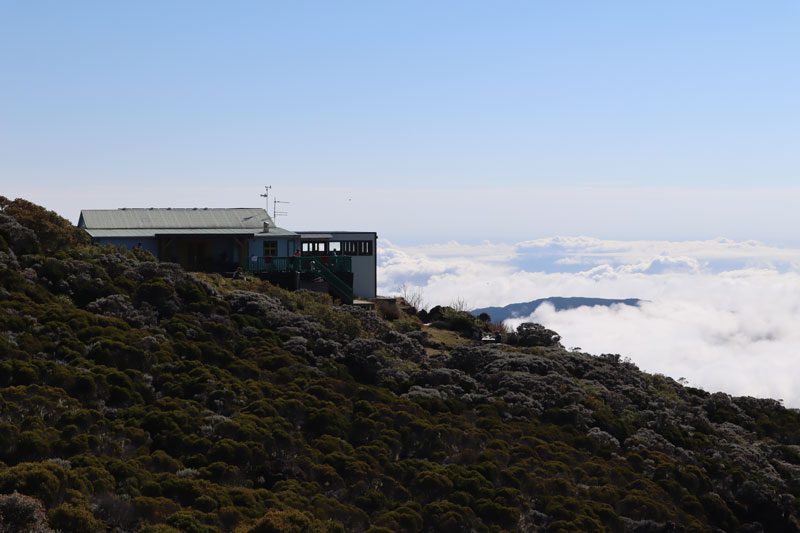
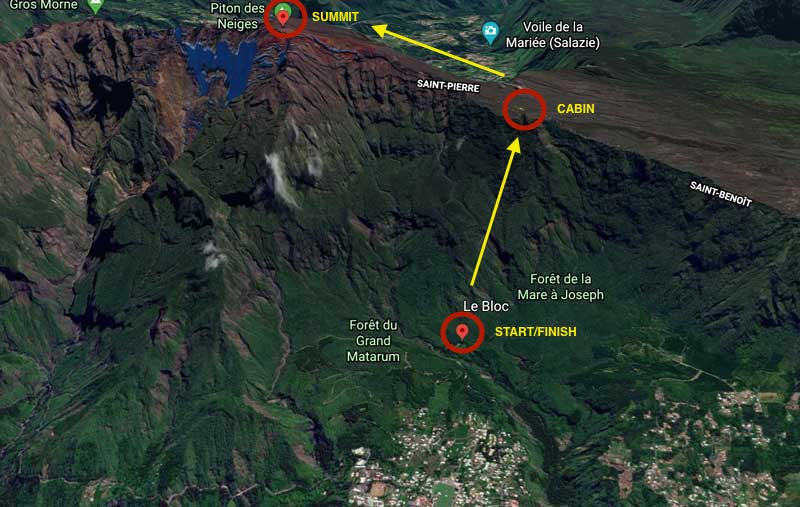
Getting to the Trailhead
We caught the 12:30 #63 bus from Cilaos to the trailhead at Le Bloc. There is a small car park just in front, but we were cautioned not to leave the car overnight due to the occasional break-in. In retrospect, we would have opted to leave the car, with nothing inside, to have flexibility with the returning bus to Cilaos (see the schedule here).
First Leg to Refuge Hut
The hike immediately begins with a continuous accent until the overnight cabin. The first section is through the rainforest, with a few clearings offering gorgeous views of Cilaos and the mountains that hug the town. After about an hour, you reach a small refuge hut with running water that we were told (by a local hiking guide) is safe to drink. We used the opportunity to snack, warm up, and fill our bottles.
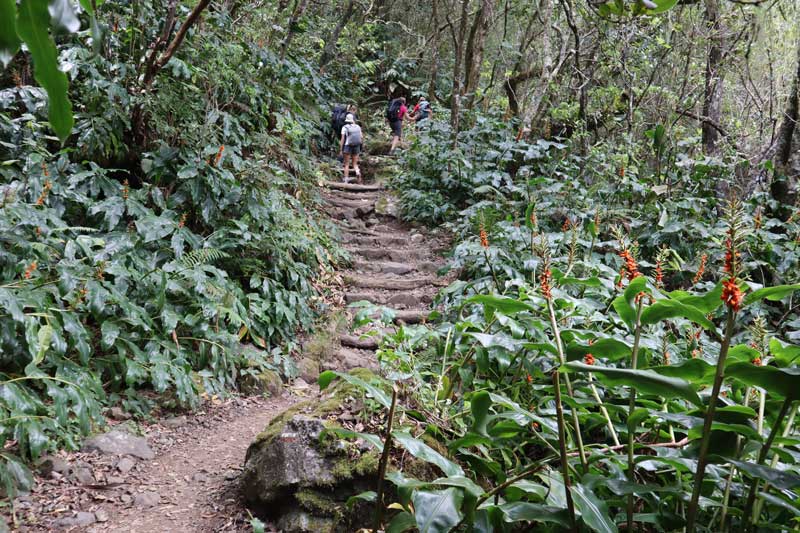
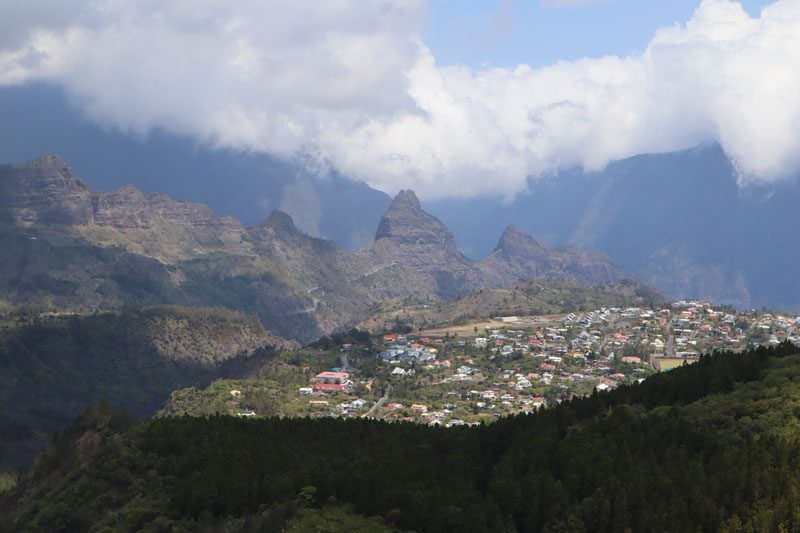
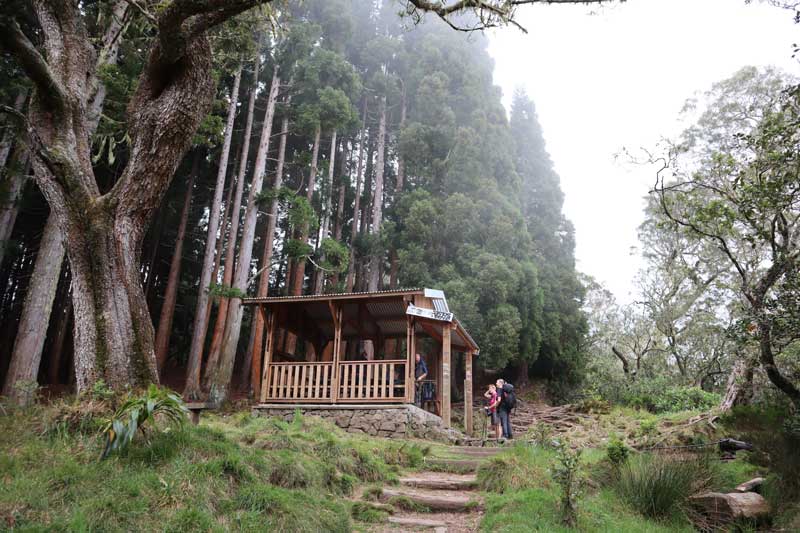
Refuge Hut to Overnight Cabin
The most challenging section of the first day begins from the refuge hut, a never-ending series of punishing switchbacks that pretty much climb vertically to the rim of the volcano (1.5 hrs from here to the cabin). You are now in the cloud forest, and by this time, the clouds have fully rolled in, so there is not much scenery to be enjoyed, and it’s chilly and potentially wet. When you look at the trail’s terrain on a Google Maps satellite view, you’ll appreciate the work done to make this terrain accessible.
Seeing the cabin (altitude 2,479m) was a sight for sore eyes, and it also marked the end of the cloud forest and the beginning of an alpine landscape. We started hiking at about 13:00 and checked in at 16:30. We weren’t the last to arrive, but most overnighters had already arrived, so the bottom bunks were already taken.
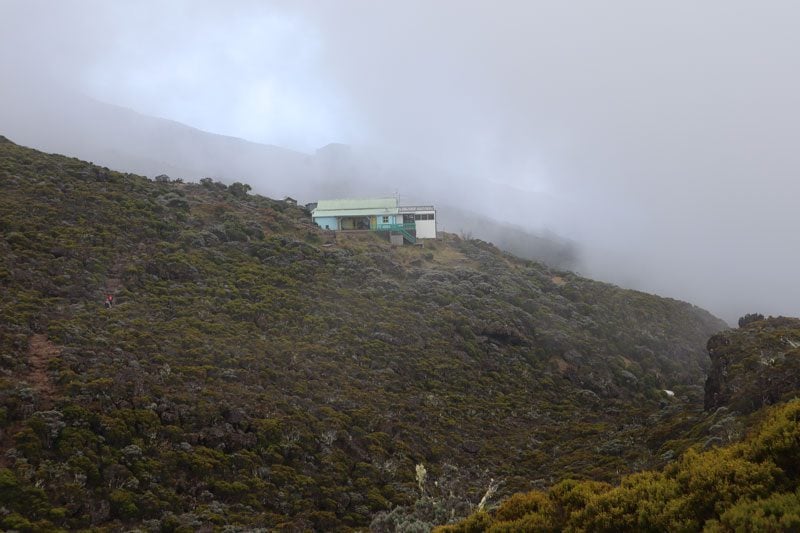
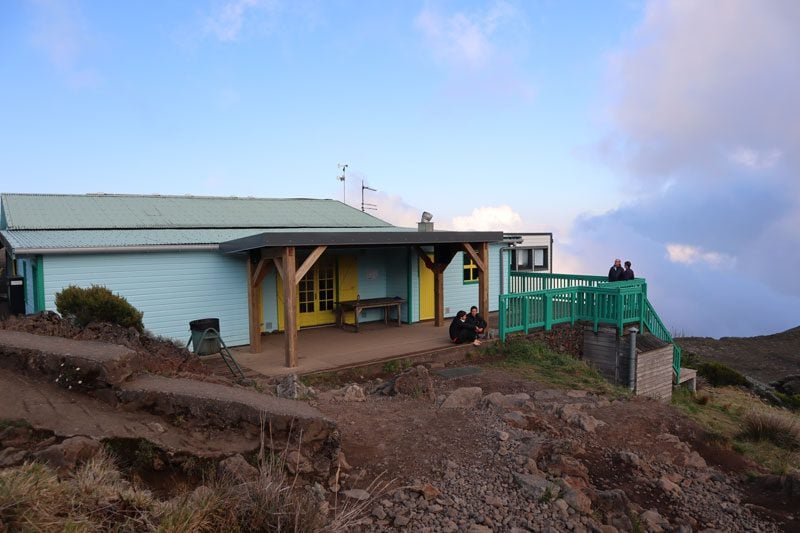
The Overnight Cabin
The cabin experience was very impressive, considering the location. It sleeps up to 48 people in a few dorm rooms and has three flush toilets (no showers) to go along with three changing rooms and (cold) running water. The friendly staff is all locals taking turns being up here for a couple of weeks at a time, and they do all the cooking, cleaning, and selling. You can buy a lot, including snacks, cooked dinners, hot and cold drinks, and even beer! After settling in and warming up, we enjoyed the changing colors as the sun was setting and could easily make Piton de la Fournaise in the distance, the active volcano that will be visited in the next section.
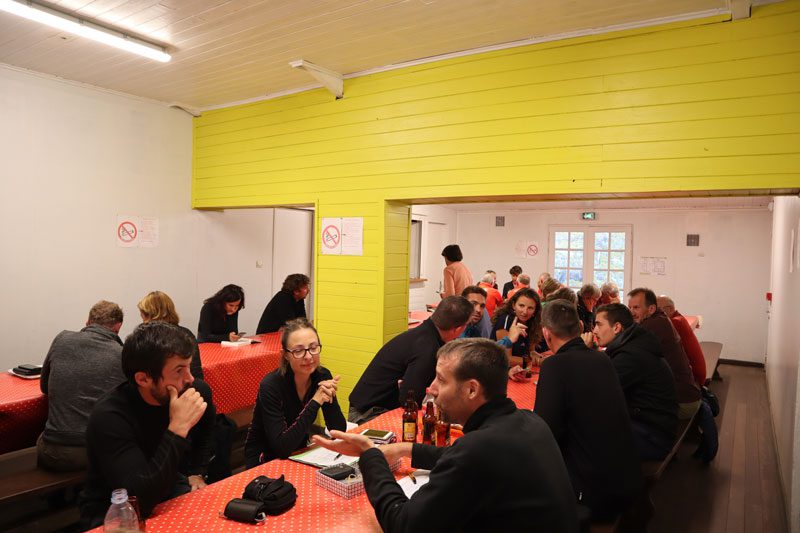
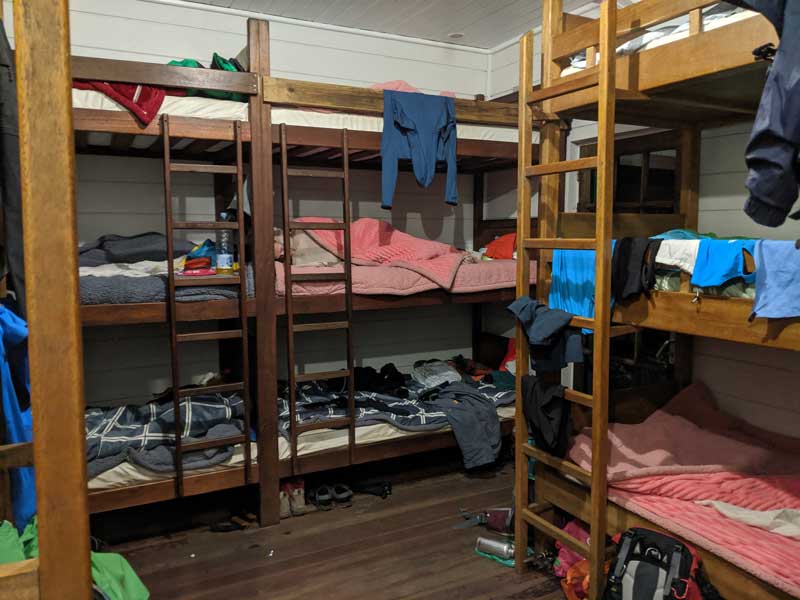
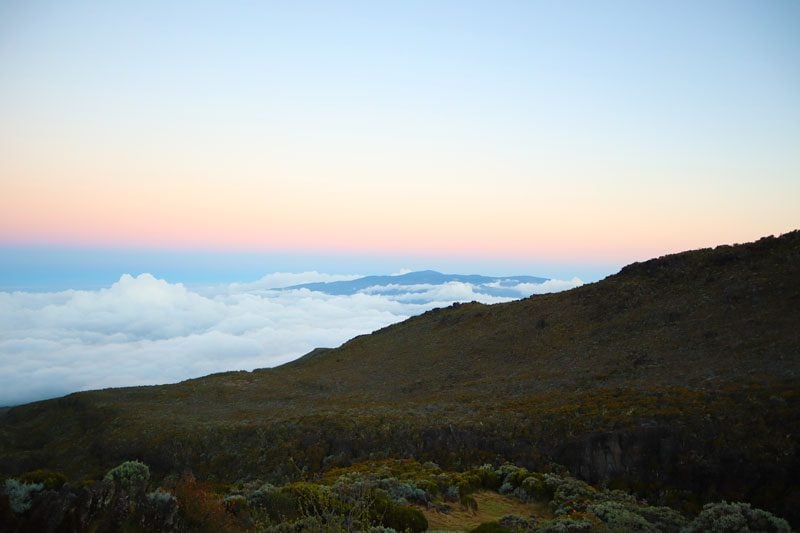
At 18:30, dinner is served in the dining room for those who wish (paid upon arrival). It consists of rice, pork sausage, beans, and liquor of 35% alcohol (just what you need at this altitude), and it’s a great opportunity to do just the right amount of mingling before turning to bed early or doing a bit of stargazing. Don’t forget to enquire about sunrise time. You’ll basically want to summit about 30 minutes before sunrise.
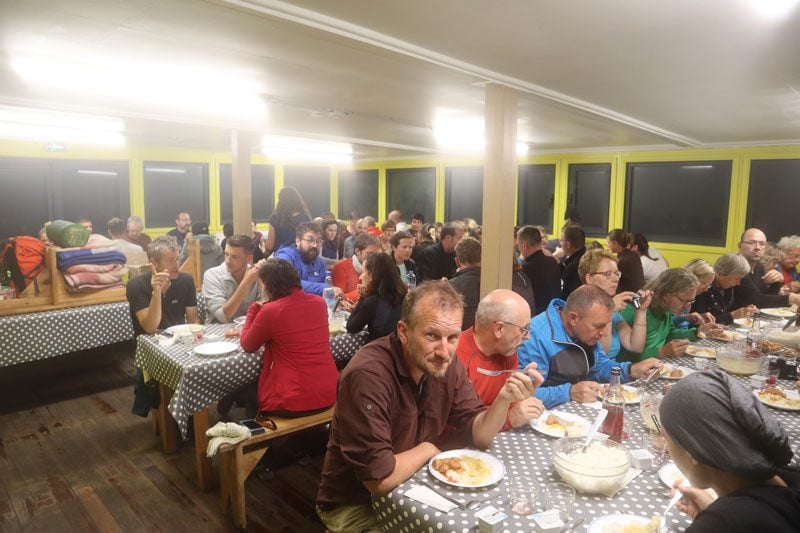
Logistics: total distance – 15km (return) | time: 7.5hrs (inc. stops) | difficulty – very challenging | Do not attempt in the rainy season.
What to pack for the hike: downloaded trail map (mentally helps to see how far you’ve progressed), printed bus schedule, proper hiking boots, walking poles, extra socks, lots of layers (starts warms, ends cold), rain gear, backpack cover (for rain), scarf/warm hat/ski gloves/thermal shirt/neck warmer, hand warmers, a full change of clothes (quick dry only), headlamp, 3L of water pp (can purchase in hut and (maybe) fill in stream en route, tissues (for runny nose), plastic bags, (optional) knee protectors, camera, drone.
What to pack for the overnight cabin: printed voucher, cash, instant soup, snacks, eating utensils (plates/bowls provided), sleeping bag/sheets (you get a blanket but no mattress sheet), toilet paper (just in case), flip-flops, toiletries (including soap), ear plugs, eye cover, portable battery to charge phone, cards (entertainment), sleeping clothes.
Day 8: Piton des Neiges Summit & Saint-Pierre
We’ll get a very early start to this day and finish the climb to the summit of Piton des Neiges. Back from “Mars”, we’ll exit Cirque de Cilaos and treat ourselves to a well-deserved break in the vibrant seaside town of Saint-Pierre.
Piton des Neiges Summit
Everybody in the cabin was up at 3 am, and we started hiking at 03:30. The cabin is a two-hour hike from the summit, and the trail is well-marked even in the dark. If that’s not enough, the stars in the night sky and the light emitted from the headlamps of fellow hikers will aid in navigation. Due to the altitude, you frequently stop to catch your breath, but it gets so cold so quickly that there’s more motivation to continue rather than to pause.
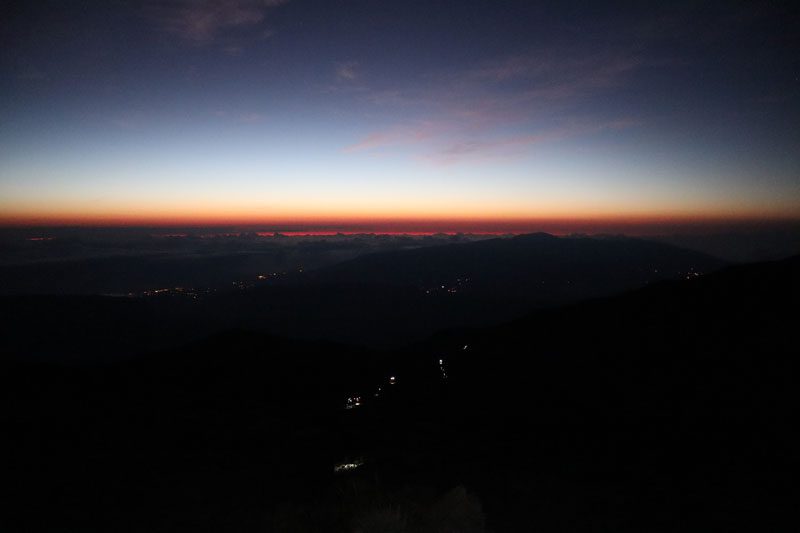
From up here, the first light of the morning is immediately seen. As you inch closer to sunrise, there’s no longer a need for the headlamp as the horizon is beautifully painted with the same shades you may have seen from a plane’s window on an overnight flight.
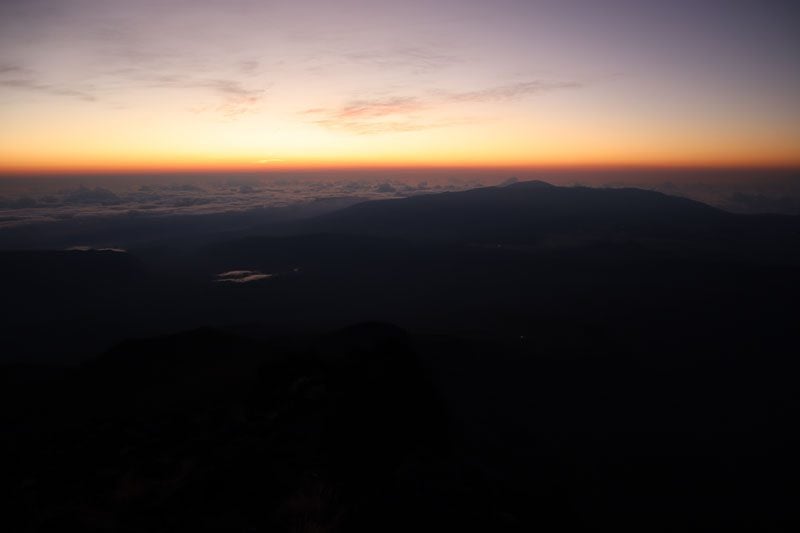
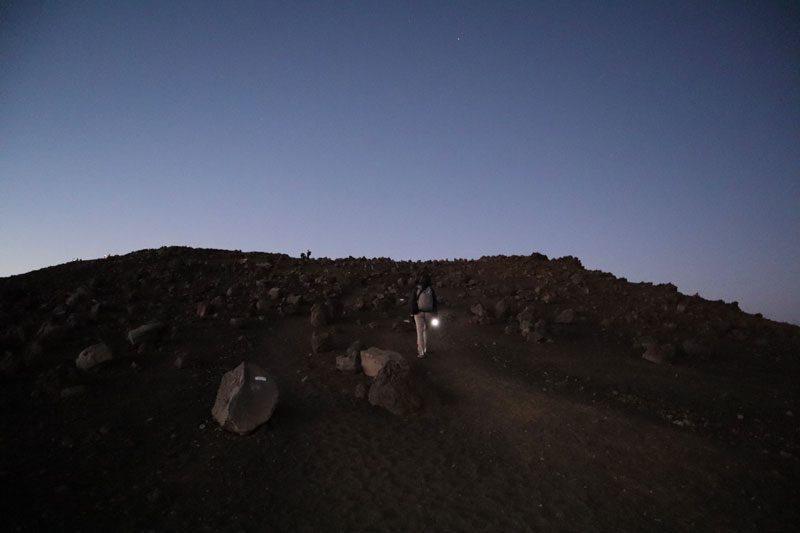
The alpine terrain has now given way to a completely barren landscape resembling a Mars documentary scene. The birds are starting to sing, and there’s a hard deadline to be met with sunrise, all the more reason to keep going.
The Summit
The final ascent is filled with both pride and a sense of overwhelmedness. We’ve never hiked to the summit of a famous mountain, and the view from up here simply takes your breath away. It’s as if you’re looking at a map of the area from above, except it’s all happening in real time. At the summit, people are trying to keep warm, and some have even (illegally) spent the night here. It’s cold and windy, and everyone is just waiting for the sun to rise and gradually warm things up finally.
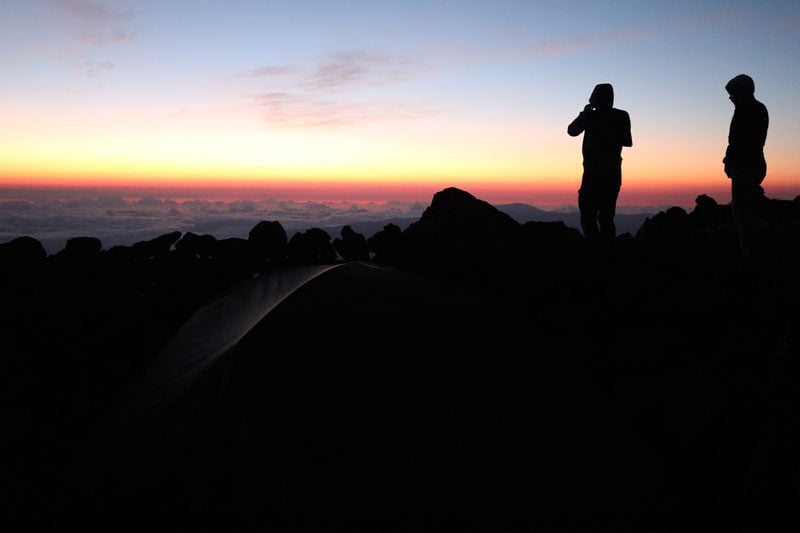
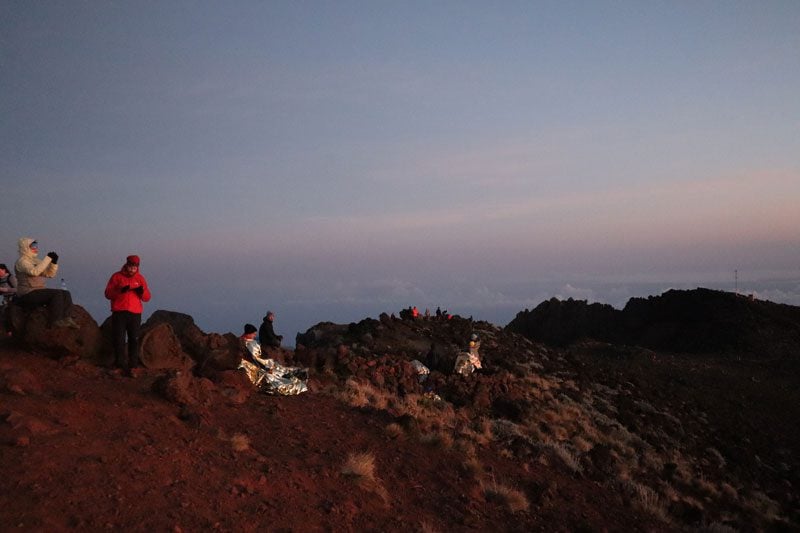

Sunrise at Piton des Neiges
Sunrise was at 5:45 am. It was a scene we’ll never forget. The higher it rose over the horizon, the more details were revealed.
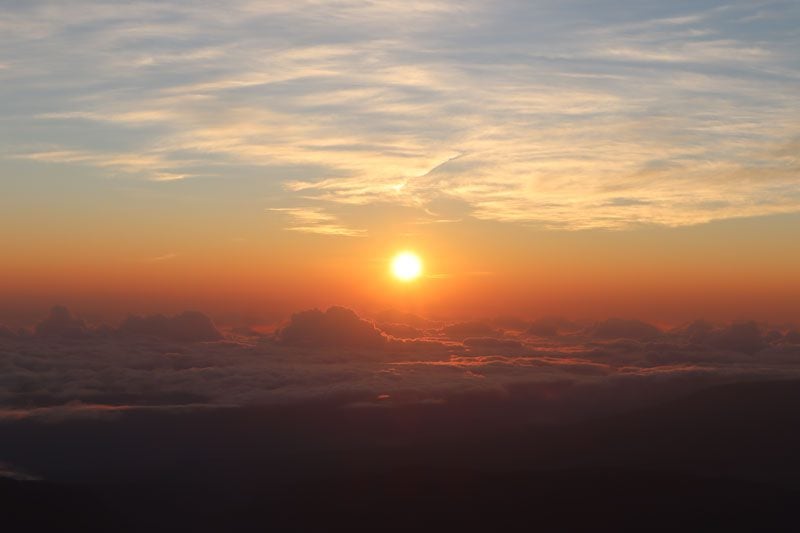
We could now point out towns and villages, clearly distinguish the color of the volcanic ash that makes up the ground, and see magnificent pinnacles rising to our right. We can also make out the famous “three sisters,” which we saw on the helicopter flight earlier in the trip and the summit of Grand Benare in the distance.
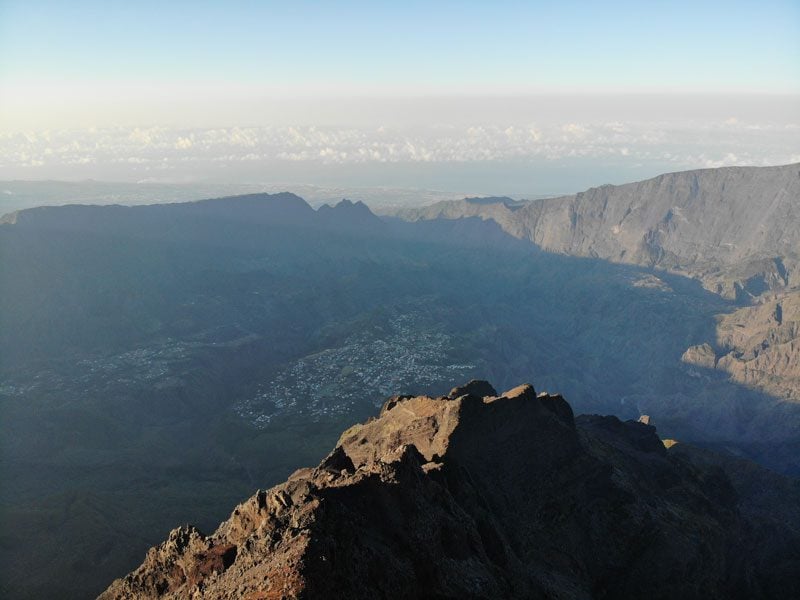
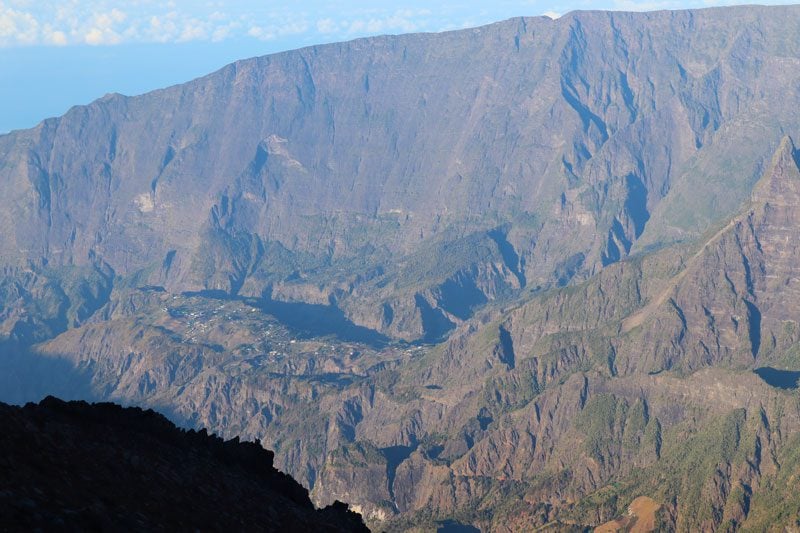

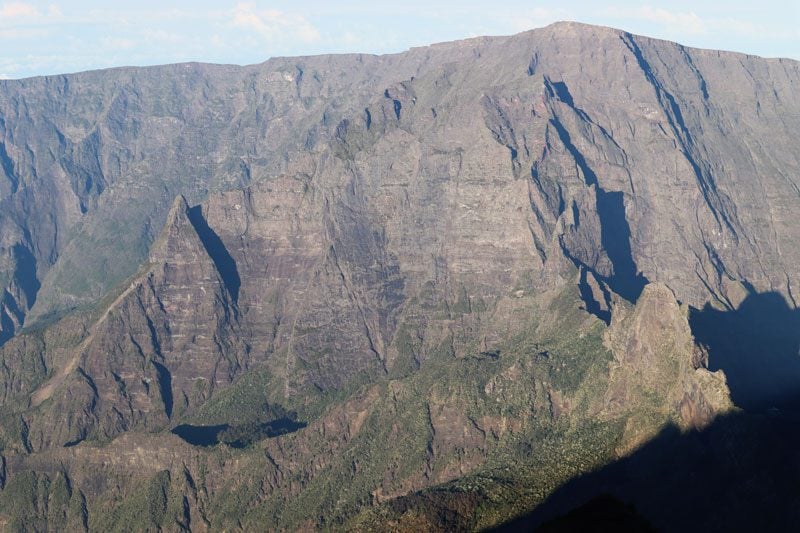
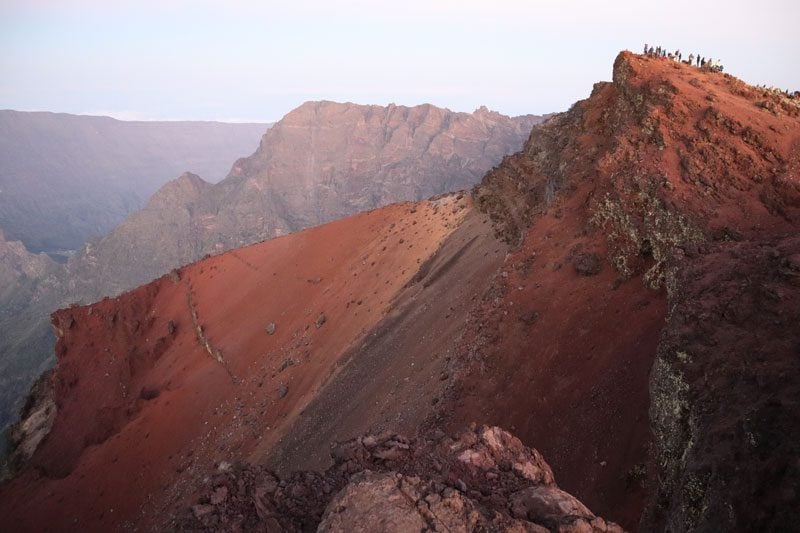
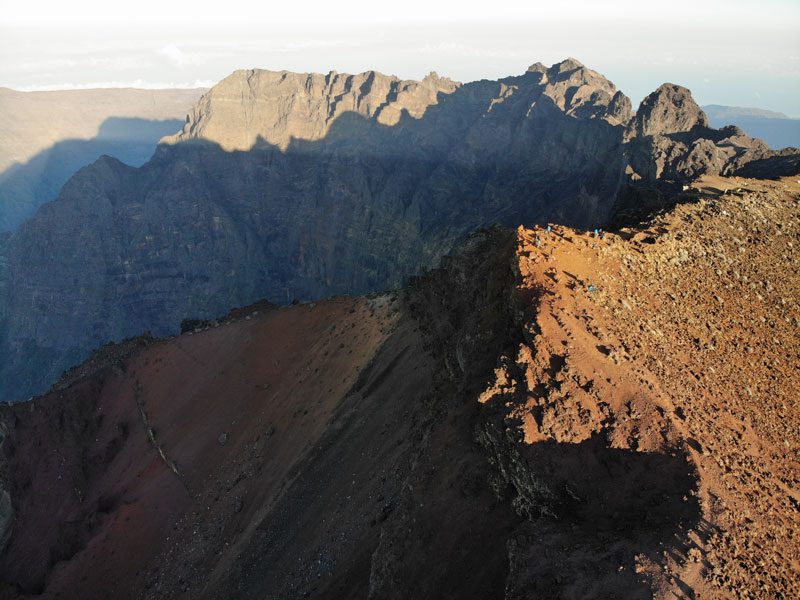
Surprisingly, people didn’t stick around for too long at the summit. Many were part of “hiking clubs” from Germany and France, so I guess they’ve seen a peak or two in their lifetime. We also had a deadline to meet as the bus from Le Bloc back to Cilaos was scheduled for 10:30, and we still needed to pause for breakfast at the cabin and make it back down. Here’s where leaving your car overnight in the car park is handy, as you’ll have all the time in the world to stick around at the summit and fully take advantage of your physical and mental accomplishments.
Back to the Trailhead
The hike from the summit to the cabin took about one hour. Done in broad daylight, it did make us wonder how on Earth we managed to climb this section in the middle of the night. Back in the cabin, breakfast was served starting at 6 am. For about 7€, you get a hot drink and a few slices of brioche.
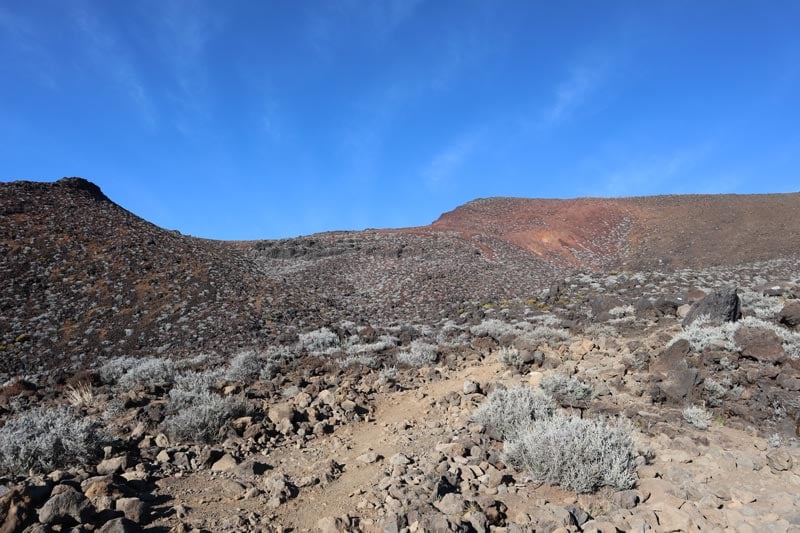
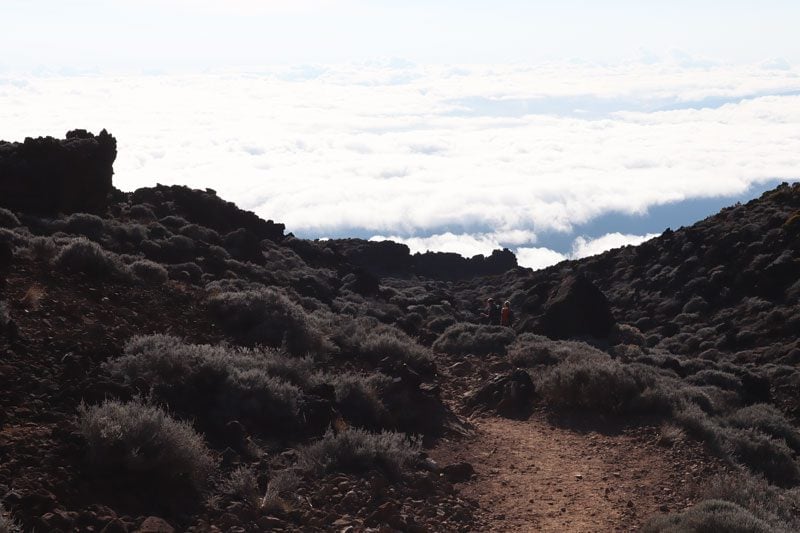
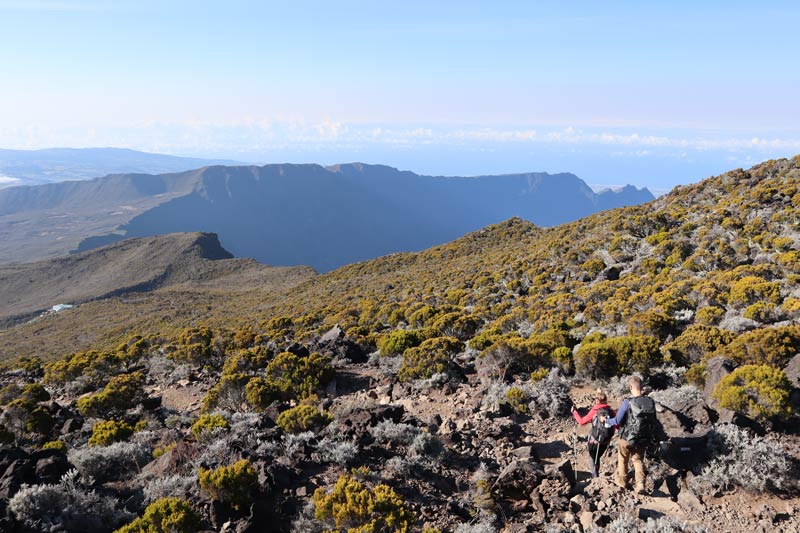
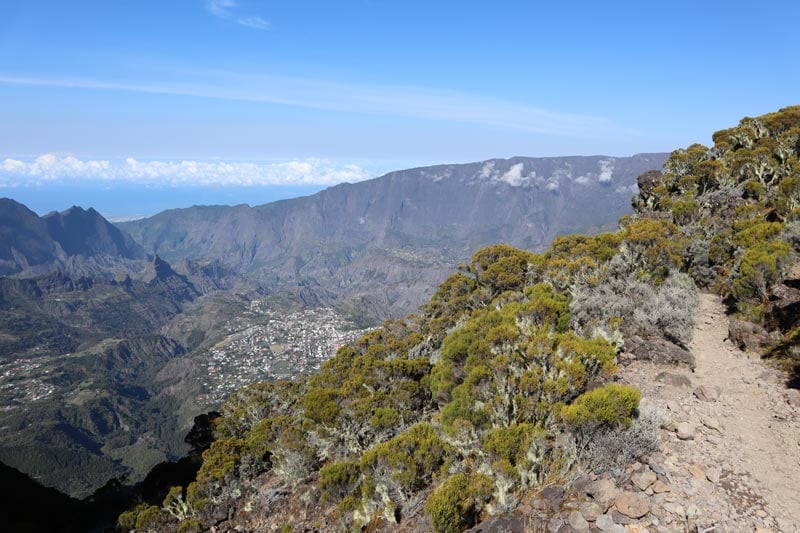
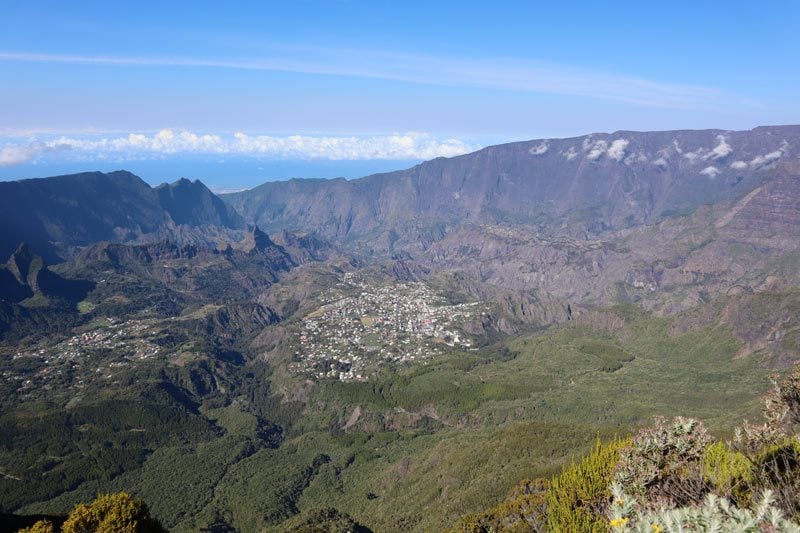
It took us exactly two hours to get from the cabin back to the main road, but we were rushing it down, to say the least, so aim for about 2.5 hours. When climbing up, this section was done in the complete cover of clouds, but there’s a very good chance that when you head down, it will still be a clear morning. So, unless you have to rush as we did, here’s another rare opportunity to enjoy the spectacular views from Reunion Island’s tallest natural skyscraper.
Lunch in Cilaos
Back in Cilaos at around 11 am, we loaded the car (left overnight at our bed and breakfast) and went for an early (greasy) lunch before driving to Saint-Pierre. Our legs were understandably in great pain, and this will last for a few days. If you have the time, maybe this is a good opportunity to pre-book a massage at Les Thermes de Cilaos.
Drive to Saint Pierre
It takes about 70 minutes to drive from Cilaos to Saint-Pierre. On the one hand, it was great to see the blue of the ocean after being “trapped” in the cirque, but on the other hand, we knew this was the last time driving on the most scenic road in Reunion Island. And so, we appreciated every single one of those 400 bends.
Where to Stay in Saint-Pierre
Hands down, the place to stay in Saint-Pierre is at Villa Belle. This guesthouse is so highly regarded that even our host in Cilaos knew about it and commended our wise choice. This Creole mansion has been around since 1935 and, in 2002, was converted into an upscale guest house. Much attention has been placed on the “Bali-like” decor of the place, and all units are very spacious, though the best ones are by the pool. Each has a kitchen, a huge (and very pampering) shower, the comfiest beds, and many interesting books.
Breakfast is served in the outdoor dining area in the lush tropical garden. If you pay close attention, you’ll spot turtles freely roaming the grounds. This is one breakfast you won’t forget, rich in both choice and taste. Villa Belle is located in a quiet section of town, uphill from the action but close enough to everything with a car (there are also dining options within walking distance). The only drawbacks were that at the time of our visit, WiFi was only available in the office, and they only accepted cash.
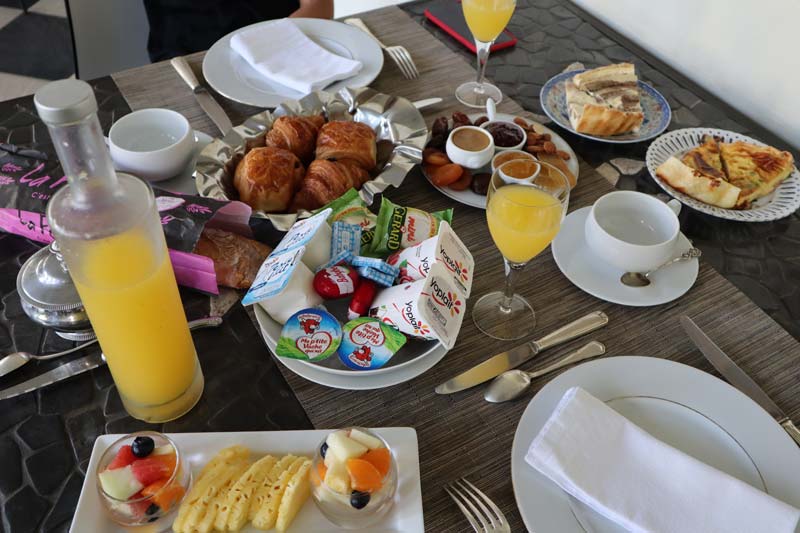
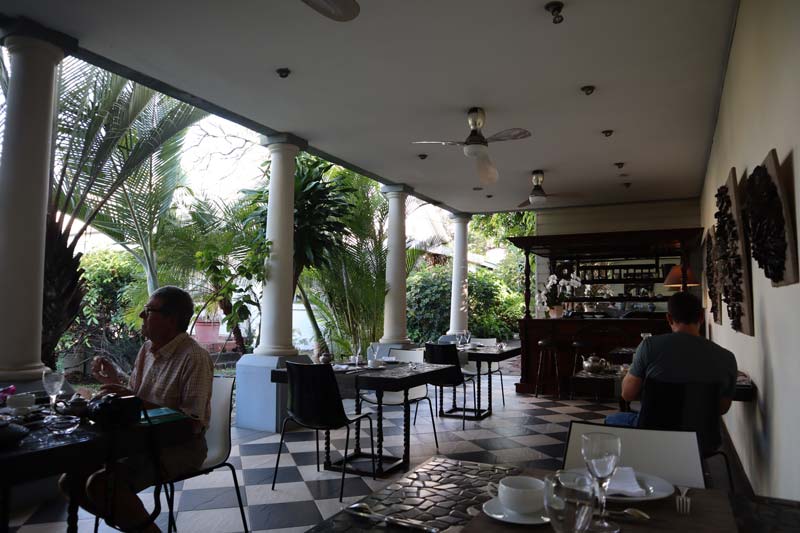
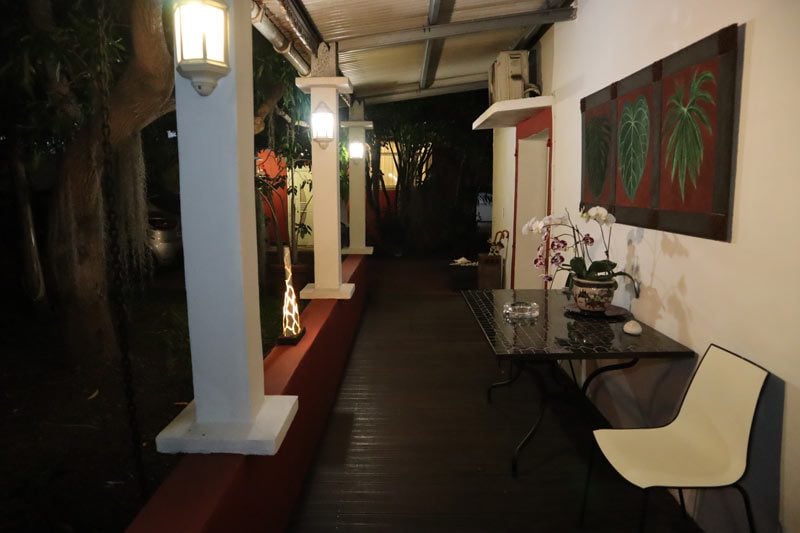
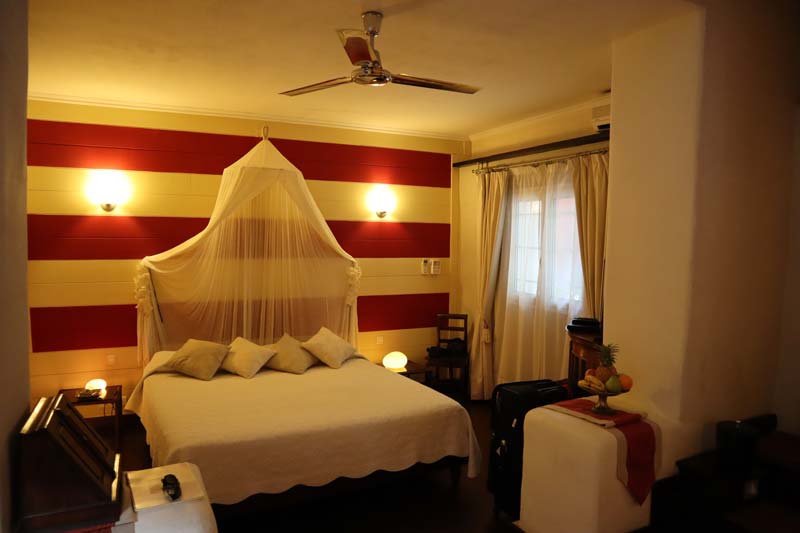
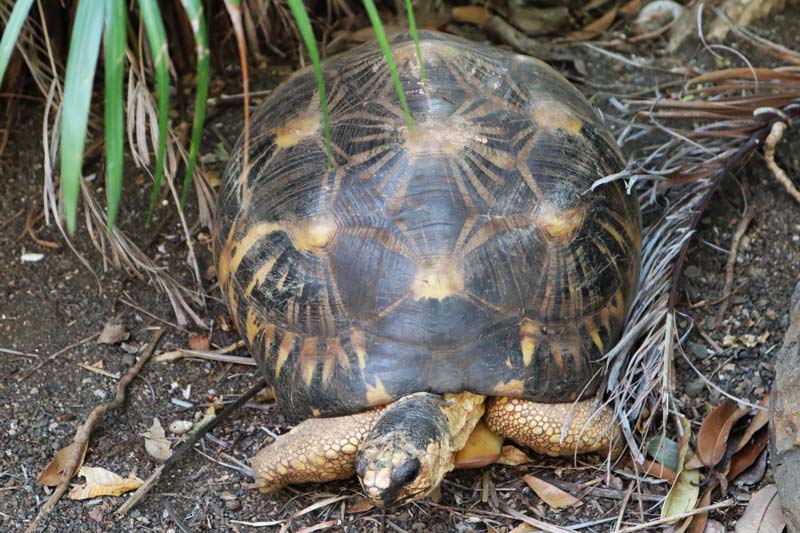
Another good option in Saint-Pierre is the seaside Le Battant des Lames. If you want to stay in the countryside, check out La Cour Mont-Vert.
Exploring Saint-Pierre
We (and our muscles) were quite exhausted after the Piton des Neiges hike, so we kept the sightseeing to a minimum. Saint-Pierre is a happening town with a tropical vibe. It has two sections: the main “new” town is west of the river, and the east is the historic fishing village.
The town is laid out on a grid, with most of the streets open to one-way traffic. It’s quite a busy place with lots of young people of mixed races and religions, including Chinese, Creoles, Tamils, and a large African Muslim community. Its historic center is dominated by Creole architecture, hosting imported French brands like FNAC and bargain shops. Apart from just wandering around the downtown area, check out the Saturday morning market, Hotel de Ville, the historic churches, and the Tamoul Karli Tamil temple. If you have extra time, you can hit the public beach and walk to the Saint-Pierre Lighthouse.
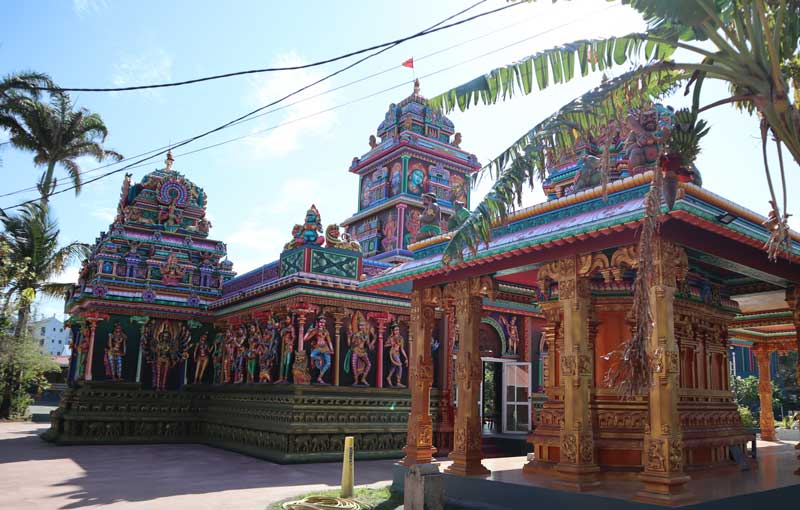
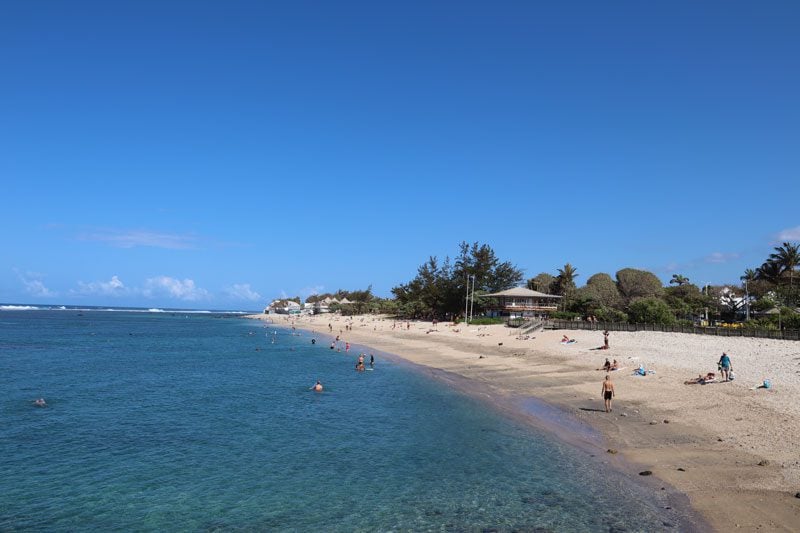
Dinner in Saint-Pierre
Saint-Pierre does not lack dining options; our hosts at Villa Belle gave us a few options. We dined at Kaz a Lea, which has a pleasant atmosphere and food. We enjoyed the Indian-style tuna tartare and the well-deserved burgers. Other recommended options include Le Cosy for seafood, DCP for fish, O Baya for gourmet, and Villa Sauvage for French cuisine.
